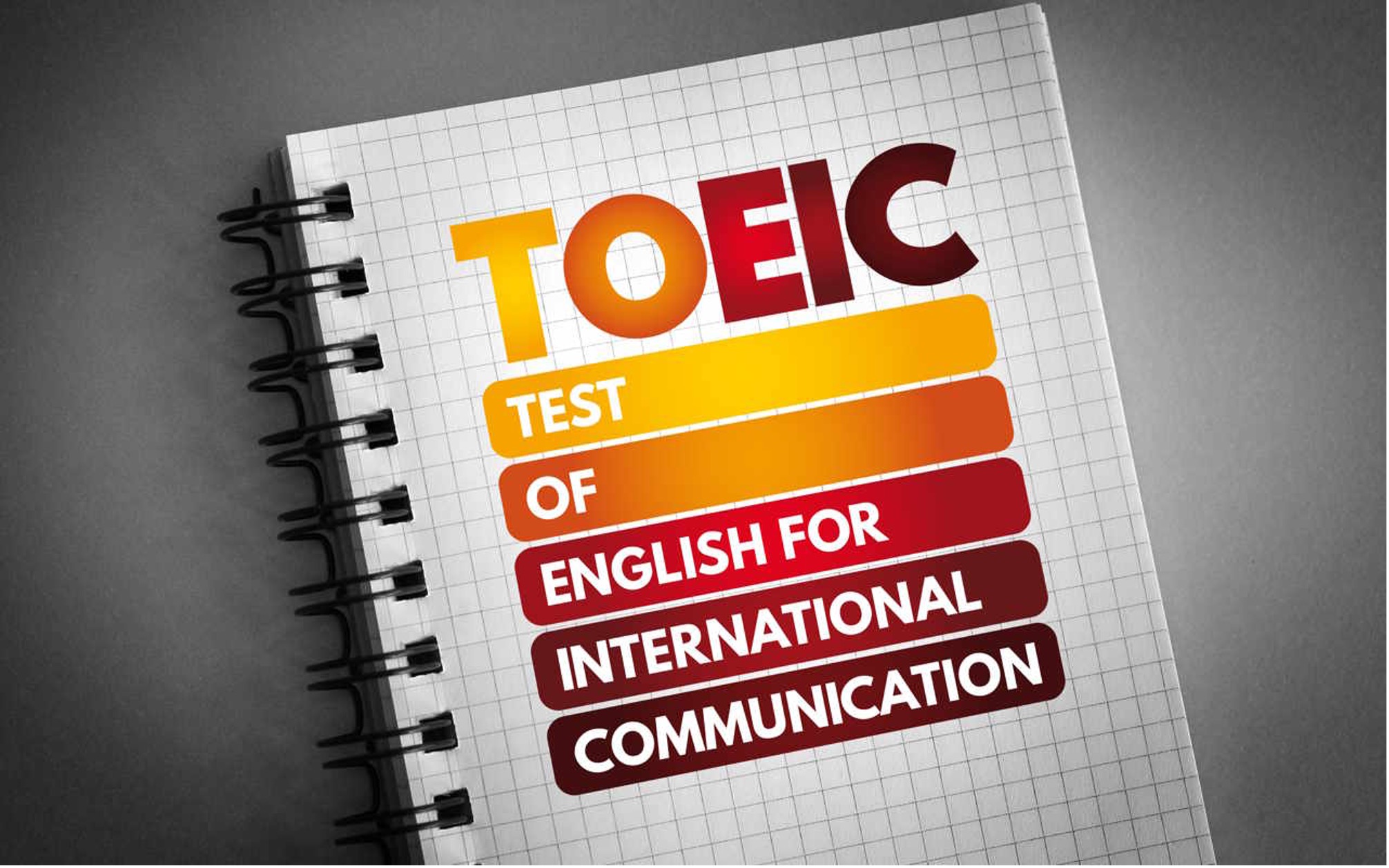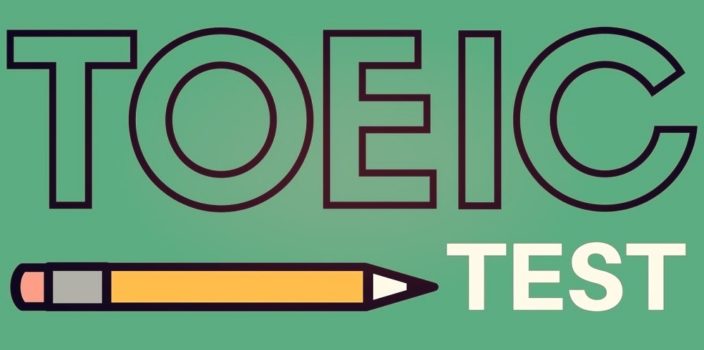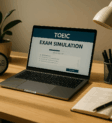
How to Prepare for the TOEIC Test Effectively: Your Complete Step-by-Step Guide
Achieving your target TOEIC score isn’t about luck or innate language talent. It’s about following a strategic, systematic preparation approach that addresses every aspect of the test. Whether you’re starting at 400 points and aiming for 750, or pushing from 700 toward 900+, this comprehensive guide provides the exact roadmap you need to maximize your score efficiently and reach your professional or academic goals.
#TOEICPreparation #TOEICSuccess #EnglishTest2025 #TOEICStudyGuide #TestPrepStrategy
Understanding What TOEIC Preparation Really Means
TOEIC preparation represents far more than simply studying English. Many candidates with excellent general English skills achieve disappointing TOEIC scores because they fail to understand this fundamental distinction. The TOEIC evaluates specific competencies within artificial constraints that bear little resemblance to natural language use. Effective preparation requires mastering both English proficiency and test-specific strategies simultaneously.

Consider the reading section’s brutal arithmetic. You face 100 questions across 75 minutes, translating to 45 seconds per question on average. However, Part 7’s lengthy passages require substantially more time, meaning Parts 5 and 6 demand even faster processing—often under 30 seconds per item. No amount of English knowledge compensates if you cannot operate at these speeds consistently.
- English Proficiency Development: Building foundational vocabulary, grammar understanding, and comprehension skills that underpin all test performance
- Test Format Familiarity: Understanding the seven-part structure, question patterns, and typical trap answers ETS strategically employs
- Time Management Mastery: Developing pacing instincts and stamina to complete 200 questions in 2 hours while maintaining accuracy
The most successful TOEIC candidates approach preparation methodically rather than haphazardly. They don’t simply “study English” and hope for the best. Instead, they follow structured programs addressing each component systematically. This guide provides exactly that structure, breaking the seemingly overwhelming task of TOEIC preparation into manageable, sequential steps that build upon each other logically.
Why Most Self-Study Attempts Fail
Research examining thousands of TOEIC preparation attempts reveals consistent failure patterns. The primary culprit isn’t lack of effort or intelligence but rather absence of systematic methodology. Students dive into practice materials without establishing baselines, making targeted improvement impossible. They practice in comfortable areas while avoiding weaknesses, inevitably hitting score plateaus. Most critically, they fail to maintain consistency over the months required for significant improvement.
This guide eliminates these failure points by providing clear structure from initial assessment through test day. You’ll know exactly what to do each day, how to track progress, and when to adjust your approach based on results. The complete TOEIC structure breakdown becomes your roadmap rather than an intimidating mystery.
Step 1: Assess Your Current Level and Set Realistic Goals
Every effective preparation journey begins with honest assessment of your starting point. Attempting to create a study plan without knowing your current level resembles planning a road trip without knowing your departure location. You cannot chart an efficient route toward your destination if you don’t understand where you’re beginning.
Conducting Your Baseline Assessment
Your first action item involves taking a complete, timed TOEIC practice test under realistic conditions. Not scattered questions from a mobile app. Not partial sections completed over several days. A full 2-hour, 200-question simulation completed in one sitting without interruptions. This diagnostic test serves multiple critical purposes beyond simply generating a score.
Take a Complete Diagnostic Test
Schedule a 2-hour block when you won’t face interruptions. Find a quiet space, silence your phone, and close all distracting applications. Use free practice tests with answers to conduct your baseline assessment. Time yourself strictly—45 minutes for Listening, 75 minutes for Reading. Mark answers on paper or screen exactly as you would during the actual test.
Analyze Results Part by Part
After completing the test, don’t simply note your total score. Break down performance across all seven parts individually. Identify which sections produced the most errors. This granular analysis reveals exactly where to focus improvement efforts rather than wasting time on already-mastered areas.
Identify Error Patterns
Review each incorrect answer carefully. Were you tricked by similar-sounding words in Listening? Did you run out of time in Reading Part 7? Understanding why you missed questions matters more than simply knowing you missed them. These patterns guide your targeted practice focus.
Establish Your CEFR Level
Convert your TOEIC score to CEFR (Common European Framework of Reference) equivalent. This standardized scale helps you understand your actual English proficiency independent of TOEIC-specific performance, providing context for realistic goal-setting.
| TOEIC Score Range | CEFR Level | Typical Competency |
|---|---|---|
| 120-225 | A1 | Elementary understanding, basic phrases |
| 225-550 | A2-B1 | Working understanding, simple interactions |
| 550-785 | B1-B2 | Functional proficiency, business contexts |
Setting Achievable Target Scores
With your baseline established, determine your target score based on actual requirements rather than arbitrary ambitions. Research specific needs for your intended purpose. Business schools publish minimum TOEIC requirements ranging from 650 to 900 depending on program selectivity. Corporate positions specify scores from 700 to 850 based on role internationality. University programs often mandate 750-800 for Master’s validation.
Realistic score improvement expectations depend heavily on starting level and preparation duration. Students beginning at 400-500 can typically reach 650-700 with three months of consistent daily practice. Those starting at 600-650 can target 750-800 in the same timeframe. Pushing from 750 to 850+ requires longer timelines—often 4-6 months—as marginal improvements become progressively harder at advanced levels.
- 3 Months Intensive: Expect 150-200 point increases with 10+ hours weekly practice
- 3 Months Moderate: Expect 100-150 point increases with 6-8 hours weekly practice
- 6 Months Consistent: Expect 200-250 point increases with 5-7 hours weekly practice
- Advanced Optimization (750+): Expect 50-100 point increases requiring 4-6 months targeted practice
Remember that diminishing returns apply at higher levels. Improving from 400 to 550 proves substantially easier than advancing from 750 to 850, even though both represent 150-point gains. Set ambitious yet realistic targets based on your timeline and available study commitment. Better to exceed a conservative goal than fall short of an unrealistic one.
Step 2: Create Your Personalized Preparation Timeline
With your baseline and target established, construct a realistic timeline mapping your journey from current state to goal achievement. This timeline serves as your preparation roadmap, breaking the intimidating gap between where you are and where you need to be into manageable phases with clear milestones.
The Optimal 3-Month Preparation Framework
Three months represents the ideal preparation duration for most TOEIC candidates, providing sufficient time for skill development while maintaining high motivation levels. This framework divides naturally into three distinct phases, each serving specific purposes within your comprehensive development journey.

| Phase | Duration | Primary Focus |
|---|---|---|
| Foundation Building | Month 1 | Format mastery, weakness identification, habit establishment |
| Intensive Development | Month 2 | Targeted practice, skill refinement, speed building |
| Test Simulation & Refinement | Month 3 | Full test practice, final optimization, confidence building |
Phase 1: Foundation Building (Weeks 1-4)
Week 1 Objectives: Complete initial diagnostic test, thoroughly understand all seven part structures, begin daily vocabulary study targeting the 500 most common TOEIC business terms. Start listening to English podcasts during commutes or household activities, focusing on business and professional contexts rather than entertainment content.
Week 2 Objectives: Practice each test part individually without time pressure, focusing on understanding question patterns and identifying personal weakness areas. Take second practice test to measure early progress and validate your targeted practice areas. Begin reading English business news daily for 20 minutes minimum.
Week 3 Objectives: Introduce timed practice for your three weakest parts identified in Week 2 assessment. Increase daily vocabulary study to 30 terms daily with context-based learning rather than isolated memorization. Begin focused listening improvement exercises addressing specific comprehension challenges.
Week 4 Objectives: Take third full practice test measuring cumulative Month 1 progress. Analyze improvement trajectory to determine if current study allocation effectively addresses weaknesses. Adjust Month 2 focus based on which areas progressed versus which remain stubborn obstacles.
Phase 2: Intensive Development (Weeks 5-8)
Month 2 transitions to substantial daily practice across all sections with increased intensity. Your established habits from Month 1 now support more demanding routines as your confidence grows. This phase emphasizes volume and variety—completing more questions, exposing yourself to more vocabulary, processing more audio.
Weekly Structure: Complete two full practice tests weekly under strict time conditions. Dedicate remaining study time to your three weakest areas identified through ongoing assessment. Increase English immersion through media consumption, business document reading, and professional podcast listening. Target minimum 10 hours weekly across all preparation activities.
Critical Success Factors: Consistency matters more than intensity during this phase. Better to study 90 minutes daily than cramming 10 hours Saturday and Sunday while neglecting weekdays. Your brain requires regular exposure to consolidate learning effectively. Missing several consecutive days erases hard-won progress requiring significant effort to regain.
Phase 3: Test Simulation & Refinement (Weeks 9-12)
Final month emphasizes realistic simulation and psychological preparation alongside content review. You’ve built the knowledge foundation—now you refine execution under pressure. Schedule practice tests at the same time of day as your actual examination, training your body and mind for peak performance during those specific hours.
Weekly Structure: Take one full practice test weekly, ideally same weekday as your scheduled exam. Spend one day meticulously reviewing test results, understanding every error completely. Use remaining days for targeted remediation of revealed weaknesses and reinforcement of already-strong areas. Reduce new content consumption, instead deepening mastery of familiar material.
Final Week Adjustment: Week 12 shifts from intensive practice to strategic review and stress management. Complete your final full practice test no later than five days before the actual exam. Final days emphasize light review, rest, and confidence building rather than last-minute cramming that typically generates anxiety without meaningful improvement.
Step 3: Select Your Preparation Resources and Tools
The TOEIC preparation market offers overwhelming options ranging from free mobile apps to premium courses costing thousands of euros. Effective resource selection requires balancing budget constraints against quality needs while avoiding both inadequate materials and excessive redundancy. You don’t need every available resource—you need the right combination for your specific situation.
Essential Resources Every Candidate Needs
Regardless of budget or learning style, certain resources qualify as non-negotiable for effective TOEIC preparation. Official ETS materials provide the most authentic question quality, as they’re created by the actual test writers. These materials reveal exactly what ETS considers appropriate difficulty and what trap answer patterns they employ. No third-party resource perfectly replicates ETS question construction.
- Full-Length Practice Tests: Minimum 5-8 complete tests to track progress and build stamina
- Part-Specific Practice: Targeted exercises for your weakest sections requiring extra attention
- Vocabulary Building System: Structured approach to learning 1,500+ essential TOEIC business terms
- Grammar Reference: Comprehensive guide covering all tested structures, particularly Parts 5-6
- Listening Exposure: Authentic English audio in business contexts with various accents
Comparing Major Resource Options
Understanding strengths and limitations of different resource types helps you construct an optimal preparation toolkit. Traditional textbooks offer comprehensive content and structured progression but lack interactive elements and immediate feedback. Digital platforms provide instant scoring and analytics but sometimes sacrifice question quality. Gamified systems like Red Swan Tutor maximize engagement but require consistent self-direction.
Traditional Textbook Approach

Advantages: Comprehensive content coverage, proven pedagogical structure, no technology requirements, ability to annotate and review offline
Disadvantages: No immediate feedback, limited practice volume, no adaptive learning, becomes tedious over months
Best For: Supplementary reference alongside primary digital resources
Gamified Digital Platform

Advantages: Maximum engagement, unlimited practice volume, instant feedback, comprehensive analytics, affordable pricing, cross-device access
Disadvantages: Requires self-discipline, internet dependence, less personal than instructor-led courses
Best For: Primary preparation method for motivated self-learners seeking flexibility and value
Building Your Resource Stack
The optimal preparation approach combines multiple resource types rather than relying exclusively on any single method. Consider a “core platform plus supplements” strategy: select one comprehensive primary resource providing daily practice structure, then add targeted supplements addressing specific needs or preferences.
Example Resource Stack: Use Red Swan Tutor as your core platform providing daily practice, full test simulations, and progress tracking (€10-30/month). Supplement with official ETS practice book providing additional authentic tests (€25-35 one-time). Add free business English podcasts for passive listening exposure during commutes (€0). Consider periodic sessions with a tutor for personalized feedback on persistent weaknesses (€30-60/hour as needed).
This combination delivers comprehensive preparation at reasonable cost while providing varied learning modalities that maintain engagement over months. The interactive game-based approach handles daily practice, official materials ensure question authenticity, podcasts provide supplementary exposure, and occasional tutoring addresses stubborn problems.
- Purchasing multiple expensive courses redundantly covering identical content
- Relying exclusively on free resources lacking comprehensive coverage or full-length tests
- Selecting resources mismatched to your learning style (visual learners buying audio-only programs)
- Accumulating resources without actually using them consistently—implementation beats collection
Step 4: Build Your Daily Study System
Sporadic, unstructured study sessions produce minimal results regardless of time invested. Effective TOEIC preparation requires establishing sustainable daily systems that become automatic habits rather than requiring constant willpower and decision-making. Your preparation success depends more on system consistency than any other single factor.
Designing Your Daily Schedule
Optimal daily schedules balance comprehensiveness against sustainability. Overly ambitious plans consuming three hours daily typically collapse within weeks as fatigue and competing obligations overwhelm initial enthusiasm. Better to maintain a modest 60-90 minute daily routine consistently than attempting unsustainable marathon sessions that inevitably fail.
Establish Your Anchor Time
Select a consistent daily time slot when preparation becomes non-negotiable. Morning before work maximizes consistency as fewer unexpected events disrupt early schedules. Evening sessions work if you maintain discipline despite after-work fatigue. Consistency matters more than specific timing—your brain adapts to regular learning windows.
Implement Time Blocking
Divide your study session into focused blocks targeting different competencies. Example 90-minute structure: 30 minutes listening practice (Parts 1-4 rotation), 30 minutes reading practice (Parts 5-7 rotation), 20 minutes vocabulary study, 10 minutes error review from previous day. This variety maintains engagement while ensuring balanced development.
Add Passive Learning Layers
Supplement focused study with passive English exposure throughout your day. Listen to business podcasts during commutes, switch phone/computer settings to English, read English news over breakfast, watch business YouTube channels during lunch breaks. These additions provide 30-60 minutes additional daily exposure with minimal schedule disruption.
Schedule Weekly Full Tests
Reserve 2-3 hour blocks weekly for complete practice tests under realistic conditions. Weekend mornings often work best as most people have fewer obligations. These tests measure progress, identify emerging weaknesses, and build the stamina essential for actual test day success.

Tracking Progress Systematically
What gets measured gets improved. Implement simple tracking systems monitoring both inputs (study hours completed) and outputs (practice test scores, part-by-part accuracy). This dual tracking reveals whether effort translates into results, allowing early course corrections if your approach isn’t yielding expected progress.
Create a basic spreadsheet logging daily study activities and weekly test results. Track time spent on each activity type (listening, reading, vocabulary, full tests). Record scores for each of the seven parts separately, not just total scores. This granular data reveals exactly where you’re improving and where you’re stagnating, enabling targeted adjustments. Consider analyzing your practice scores with spreadsheet tools for deeper insights.
- Sunday Evening: Review past week’s study completion rate and total hours invested
- Analyze Test Results: Compare weekend practice test scores to previous weeks, noting improvement trajectories
- Identify Patterns: Determine which parts consistently improve versus which remain problematic
- Adjust Coming Week: Modify time allocation toward persistent weakness areas revealed in analysis
- Celebrate Progress: Acknowledge improvements to maintain motivation through challenging phases
Maintaining Consistency Through Obstacles
Even optimal systems face disruptions from work deadlines, family obligations, illness, and general life chaos. The difference between successful and failed preparation attempts often lies in recovery from inevitable disruptions rather than avoiding them entirely. Develop contingency strategies before obstacles arise rather than improvising during crises.
Minimum Viable Practice: Define your absolute minimum daily commitment sustainable even during extremely busy periods—perhaps 15-20 minutes reviewing vocabulary and completing a few practice questions. This minimum prevents complete derailment during temporary high-stress periods while maintaining your habit loop.
Recovery Protocol: When you miss multiple consecutive days, immediately return to your system without guilt or attempts to “make up” missed time. Catching up proves psychologically demoralizing and practically impossible. Simply resume normal schedule, accepting that temporary setbacks occur during months-long preparation journeys.
Step 5: Master TOEIC Listening Comprehension
The Listening section accounts for 495 of your 990 total points, making it essential rather than supplementary. Many candidates underestimate Listening difficulty, assuming their reading skills compensate for weaker aural comprehension. This assumption proves costly as Listening mistakes directly eliminate half your scoring potential before you even reach the Reading section.
Understanding the Four Listening Parts
Each Listening part evaluates distinct skills requiring specific preparation strategies. Part 1 (Photographs) tests visual-verbal connection and descriptive vocabulary. Part 2 (Question-Response) evaluates conversational comprehension and response appropriateness. Part 3 (Conversations) requires processing multi-speaker exchanges and inferring implicit information. Part 4 (Short Talks) demands sustained attention to extended monologues and detail retention.
| Part | Questions | Key Challenge |
|---|---|---|
| Part 1: Photographs | 6 questions | Precise vocabulary, similar-sounding trap answers |
| Part 2: Question-Response | 25 questions | Speed, paraphrased responses, indirect answers |
| Part 3: Conversations | 39 questions | Multiple speakers, inference, graphic integration |
Targeted Practice Strategies by Part
Part 1 Mastery: Despite containing only 6 questions, Part 1 establishes psychological momentum for the entire Listening section. Master descriptive vocabulary for common TOEIC photograph scenarios: office environments, construction sites, restaurants, transportation, retail settings. Practice distinguishing similar-sounding verbs (sitting/seating, laying/lying) that frequently appear in trap answers.
Part 2 Excellence: The 25 questions in Part 2 pass extremely quickly, requiring sharp focus and rapid processing. Train yourself to identify question words immediately (who, what, when, where, why, how) as they determine appropriate response types. Recognize that correct answers often paraphrase rather than repeat question vocabulary. Practice predicting logical responses before hearing options.
Part 3 & 4 Strategies: These extended sections demand sustained concentration and multi-tasking. Read questions and answer choices during direction time and pauses between conversations. Underline key information in questions to focus listening attention. Practice visual integration as modern TOEIC includes graphic-based questions requiring coordination between audio and printed materials.
- Watch business news (Bloomberg, CNBC) with subtitles, then without, comparing comprehension
- Listen to business podcasts at increasing speeds (1x, 1.25x, 1.5x) to build processing capacity
- Shadow speak (repeat immediately after hearing) to connect listening and pronunciation
- Dictate sentences from TOEIC audio to identify specific words you’re mishearing
- Practice with all four TOEIC accents (American, British, Canadian, Australian) regularly
Overcoming Common Listening Obstacles
French speakers face specific listening challenges due to phonetic differences between French and English. English contains numerous vowel and consonant sounds absent from French phonology, making certain distinctions extremely difficult for native French speakers to perceive and reproduce. Understanding these language-specific challenges helps target remediation effectively.
The “th” sounds (/θ/ and /ð/), R-controlled vowels, and subtle short vowel distinctions (bit/bet, ship/sheep) frequently cause comprehension errors for French learners. Additionally, English word stress patterns differ fundamentally from French’s relatively flat intonation, making stress-based meaning distinctions challenging to process for French natives.
Systematic practice explicitly targeting these problem areas yields faster improvement than general listening exposure alone. Use minimal pair exercises focusing on sounds you specifically struggle with. Practice shadowing native speakers to internalize natural rhythm and intonation patterns. Record yourself and compare to natives, identifying specific pronunciation deviations affecting your comprehension. The comprehensive listening improvement guide provides detailed exercises addressing these challenges.
Step 6: Achieve TOEIC Reading Excellence
Reading comprehension success hinges less on passive understanding than on active time management and strategic question approach. You could potentially answer every Reading question correctly given unlimited time. The challenge lies in completing all 100 questions within 75 minutes while maintaining accuracy despite time pressure and accumulated fatigue from the preceding Listening section.
Strategic Time Allocation Across Reading Parts
The three Reading parts require dramatically different time investments per question. Part 5 (Incomplete Sentences) demands quick grammar-based decisions averaging 20-25 seconds per question. Part 6 (Text Completion) requires slightly more context processing at 30-35 seconds per question. Part 7 (Reading Comprehension) consumes the bulk of your time with passages requiring 60-90 seconds per question depending on length and complexity.
- Part 5 (30 questions): Target 10-12 minutes total (20-24 seconds per question)
- Part 6 (16 questions): Target 8-10 minutes total (30-38 seconds per question)
- Part 7 (54 questions): Allocate remaining 53-57 minutes (59-63 seconds per question)
- Buffer Time: Reserve 2-3 minutes for question review and unforeseen difficulties
These targets require disciplined pacing that most candidates initially struggle to maintain. Practice with visible timers tracking elapsed time for each part, developing internal clocks that alert you when spending too long on difficult questions. Better to guess on 2-3 challenging items than run out of time and leave 5-10 questions completely unanswered.
Part 5 Grammar Mastery
Part 5’s 30 sentence completion questions primarily test grammar knowledge rather than reading comprehension. Master the 12-15 grammar patterns that comprise approximately 80% of Part 5 questions: verb tenses, subject-verb agreement, pronouns, prepositions, conjunctions, relative clauses, comparatives/superlatives, and word forms (noun/verb/adjective/adverb selection).
Develop pattern recognition enabling instant categorization of each question type. See a blank with four verb options? Immediately identify it as verb tense/form question and apply systematic decision process. See four similar words differing only in suffixes? Recognize word form question and determine required part of speech from context. This automatic categorization eliminates wasted time on deliberation.
Part 6 Context Integration
Part 6 combines Part 5’s grammar focus with requirement for context awareness from surrounding sentences. Four texts each contain four blanks requiring appropriate completions. Modern TOEIC includes sentence-insertion questions where you must determine the logical placement of a complete sentence within the text, demanding comprehension beyond isolated grammar rules.
Effective Part 6 Approach: Quickly skim the entire passage before attempting any blanks, gaining overall understanding of topic and structure. Then address each blank sequentially, reading 1-2 sentences before and after the blank for context. Grammar-based questions can often be answered quickly, while sentence-insertion and vocabulary-in-context questions require more deliberation.
Part 7 Passage Strategies
Part 7’s 15 passages (single, double, and triple texts) account for 54 questions—over half the Reading section. Efficient passage navigation proves crucial for completing all questions within time constraints. Master skimming for main ideas, scanning for specific details, and distinguishing between question types requiring different reading strategies.
- Main Idea Questions: Skim first and last paragraphs plus topic sentences for overall message
- Detail Questions: Scan for keywords from question, then read surrounding context carefully
- Inference Questions: Eliminate obviously wrong answers, choose option most supported by passage evidence
- Vocabulary Questions: Use context clues and eliminate options that don’t fit passage meaning
- Multiple Passage Questions: Identify which specific text contains relevant information before reading extensively
Practice identifying question types instantly and applying appropriate strategies automatically. This systematic approach prevents the common mistake of reading passages completely before looking at questions, wasting precious seconds on information irrelevant to actual questions asked. Strategic readers process exactly what’s necessary while skipping superfluous details.
Step 7: Systematically Build Vocabulary and Grammar
TOEIC success requires mastering approximately 1,500 business-specific vocabulary terms beyond general English. Additionally, you must command the 12-15 grammar structures comprising 80% of tested patterns. Systematic, organized learning proves far more efficient than haphazard acquisition hoping you’ll encounter necessary terms through random exposure.
Business Vocabulary Acquisition Strategy
The TOEIC focuses heavily on business and professional contexts: office management, human resources, finance, marketing, manufacturing, travel, dining, entertainment, and general corporate operations. Studying vocabulary organized by these thematic clusters proves more effective than random word lists, as contextual associations aid retention.
Daily Vocabulary Study System: Learn 20-25 new terms daily through spaced repetition. Study new words in morning, review them at lunch, test yourself in evening. Repeat the same words next day, then 3 days later, then weekly. This spaced repetition combats the forgetting curve, moving vocabulary from short-term to long-term memory through strategic review timing.
- Studying isolated words without context—always learn terms in sample sentences
- Relying on translation rather than English definitions—think in English, not your native language
- Passive reading without active testing—you must attempt recall to build memory
- Focusing exclusively on nouns while neglecting verbs, adjectives, and adverbs
- Ignoring collocations (word combinations) that appear frequently together in English
Grammar Framework Mastery
While TOEIC grammar seems overwhelming initially, analysis reveals that relatively few structures account for most questions. Focus your grammar study on these high-frequency patterns rather than attempting comprehensive grammar mastery that extends far beyond TOEIC requirements.
| Grammar Category | Question Frequency | Priority Level |
|---|---|---|
| Verb Tenses & Forms | ~25% of Part 5 | Highest priority – master completely |
| Word Forms (noun/verb/adj/adv) | ~20% of Part 5 | Highest priority – master completely |
| Prepositions & Conjunctions | ~15% of Part 5 | High priority – know common patterns |
Create personal grammar reference sheets summarizing these key structures with example sentences. Review these sheets weekly, ensuring patterns become automatic rather than requiring conscious deliberation. When you encounter Part 5 questions during practice, you should recognize patterns instantly and apply appropriate rules reflexively.
Context-Based Learning Through Reading
Supplement structured vocabulary and grammar study with extensive reading of authentic business English materials. Read business news from sources like The Economist, Harvard Business Review, or Forbes. This exposure reinforces studied vocabulary while presenting terms in natural contexts, improving both retention and appropriate usage understanding.
When reading, don’t stop to look up every unknown word immediately. First attempt to understand from context, then verify definitions for terms you cannot infer. This process builds valuable inference skills while preventing reading flow disruption. Maintain a personal vocabulary journal recording new terms encountered with their contexts—your own examples prove more memorable than textbook sentences.
Step 8: Integrate Full Practice Tests Strategically
Complete practice tests serve multiple essential functions beyond simply providing additional questions. They measure progress objectively, build test-taking stamina, reveal time management weaknesses, and accustom you to the psychological pressure of sustained concentration under time constraints. However, practice test frequency and timing require strategic planning rather than random administration.
Optimal Practice Test Schedule
More tests don’t necessarily produce better results. Taking practice tests too frequently prevents adequate time for addressing revealed weaknesses between assessments. Conversely, testing too infrequently leaves you unaware of whether your daily practice actually translates into improved performance. Balance provides the key.
Initial Diagnostic (Week 1)
Your first complete test establishes baseline performance and identifies major weakness areas requiring immediate attention. Schedule this test before beginning formal preparation to obtain accurate starting data uncorrupted by any studying effects.
Progress Checks (Weeks 4, 8, 11)
Take full tests at monthly intervals measuring skill development trajectory. These milestone tests reveal whether your preparation approach effectively addresses weaknesses or requires strategy adjustments. Consistent improvement validates current approach; plateaus signal need for change.
Final Simulation (5-7 Days Before Exam)
Complete your final practice test one week before actual exam date. This provides final data point confirming readiness while leaving sufficient time to address any last-minute concerns revealed. Avoid testing within 3-4 days of actual exam to prevent mental fatigue.
Post-Test Analysis Sessions
Dedicate equal time to analyzing test results as you spent taking the test. Review every incorrect answer understanding why you erred and what knowledge gaps or strategy failures produced the mistake. This analysis proves more valuable than the test itself.
Simulating Realistic Test Conditions
Practice tests only develop necessary stamina and psychological resilience when taken under completely realistic conditions mimicking actual exam environment. Half-hearted practice with interruptions, scattered timing, or reference material access produces false confidence that crumbles under actual test pressure.
Complete Simulation Requirements: Schedule uninterrupted 2-hour block. Find quiet space with desk and chair. Turn off phone and close all non-essential applications. Use pencil for marking answers on paper. Time yourself strictly—45 minutes Listening without pausing, 75 minutes Reading without extending. No bathroom breaks, no water except between sections, no looking up answers mid-test. Experience the uncomfortable reality of sustained concentration under pressure. Set up your ideal home simulation environment properly.
- Score Analysis: Track overall score plus individual part scores, comparing to previous tests
- Time Management: Review whether you completed all questions or ran out of time anywhere
- Error Categorization: Group mistakes by type (grammar, vocabulary, inference, careless errors)
- Pattern Recognition: Identify if certain parts or question types consistently cause problems
- Action Planning: Determine specific focus areas for coming week based on revealed weaknesses
Interpreting Score Fluctuations
Practice test scores naturally fluctuate within ranges due to test-specific difficulty variations, your daily energy levels, and random chance in multiple choice testing. Don’t panic over single-test score drops—look for trends across multiple tests. A 20-30 point fluctuation between consecutive tests means nothing; consistent 50+ point improvements across multiple tests indicate genuine progress.
Similarly, single tests showing unexpected jumps may reflect unusually easy material or lucky guessing rather than sudden mastery. Celebrate good results but verify through subsequent tests before concluding you’ve achieved breakthrough improvement. Consistent, gradual progress proves more reliable than dramatic spikes followed by regression toward previous levels.
Step 9: Identify and Eliminate Common Mistakes
Certain preparation mistakes appear so frequently across failed TOEIC attempts that they deserve specific attention and proactive prevention. Understanding these patterns helps you avoid wasting months on ineffective approaches that countless previous candidates have already proven unsuccessful.
The Top 7 TOEIC Preparation Mistakes
Critical Mistakes That Sabotage Results
- Studying Without Time Pressure: Practicing questions with unlimited time teaches you nothing about performing under actual test constraints where speed determines success equally with accuracy
- Neglecting Weak Areas: Spending disproportionate time on sections you already handle well while avoiding uncomfortable weak sections guarantees score plateaus and prevents target achievement
- Passive Practice Without Active Review: Completing questions but failing to analyze errors thoroughly wastes practice time as you repeat identical mistakes without understanding causes
- Last-Minute Cramming: Starting preparation 2-3 weeks before test date provides insufficient time for skill development, producing marginal improvements compared to proper 3-month timelines
- Ignoring Official Materials: Relying exclusively on third-party resources that don’t accurately reflect ETS question patterns leaves you unprepared for actual test question types and difficulty
Effective Strategies That Guarantee Progress
- Strict Time Management Practice: Always practice with visible timer, forcing yourself to complete questions within target time limits even when struggling, building essential pacing instincts
- Targeted Weakness Remediation: Dedicate 60-70% of study time to your three weakest areas identified through regular assessment, ensuring balanced improvement across all sections
- Deep Error Analysis: Spend equal time reviewing mistakes as taking practice tests, understanding both what correct answer is and why you selected wrong answer
- Extended Preparation Timeline: Begin studying 3-6 months before test date, allowing gradual skill building through consistent daily practice rather than impossible sprint attempts
- Mixed Resource Approach: Combine official ETS materials with quality third-party resources providing varied question exposure while ensuring authentic preparation foundation
Recognizing When to Adjust Your Approach
Effective preparation requires periodic strategy evaluation and willingness to adjust approaches that aren’t producing expected results. If your monthly progress tests show minimal improvement despite consistent study effort, something in your methodology needs changing rather than simply continuing identical approaches hoping for different outcomes.
Adjustment Triggers: Scores plateau for 3-4 consecutive weeks despite regular practice. Consistent errors in same question types despite focused practice on those areas. Study sessions feel increasingly tedious reducing engagement and consistency. Time management remains problematic despite months of practice. These signals indicate need for methodology changes rather than simply more effort.
Potential Adjustments: Shift from passive reading to more active speaking practice if oral skills lag. Change from isolated grammar drills to context-based learning through extensive reading. Modify study timing if evening sessions prove less effective than morning practice. Add gamified resources if traditional materials become unbearably tedious. Seek occasional tutoring if self-study reaches limits. Explore detailed mistake analysis and solutions.
Step 10: Execute Your Final Week Strategy
The week immediately preceding your TOEIC exam requires a completely different approach than the preceding months of intensive preparation. Attempting to cram new material during final days typically generates anxiety without meaningful score improvement. Instead, focus on reinforcement, confidence building, and optimal physical and mental preparation.
Days 7-5 Before Exam: Light Review and Final Simulation
Complete your final full practice test no later than 5-7 days before the actual exam. This provides sufficient time to address any surprising weaknesses revealed while avoiding mental fatigue from testing too close to exam date. Review the test results thoroughly, but don’t attempt to learn entirely new material—reinforce existing knowledge instead.
Spend remaining time reviewing your personal error log compiled throughout preparation. What types of questions consistently caused problems? What grammar patterns or vocabulary themes required extra attention? What time management issues appeared repeatedly? Review these areas lightly without intensive drilling—you’re refreshing memory, not building new skills.
Days 4-2 Before Exam: Maintenance Mode
Reduce study intensity dramatically to 30-45 minutes daily. Complete a few questions from each test part to maintain familiarity without exhaustion. Review vocabulary lists passively without attempting to memorize new terms. Watch English content you find genuinely enjoyable rather than forcing yourself through dry business material.
- Confirm test location and transportation, planning to arrive 30 minutes early
- Prepare test day materials: ID, confirmation, pencils, eraser, water bottle
- Review test format one final time ensuring complete familiarity with all parts
- Plan test eve and test day meals avoiding foods that might cause digestive issues
- Establish sleep schedule ensuring 8+ hours the two nights before exam
Day Before Exam: Rest and Routine
Do not attempt any significant studying on the day before your exam. Cramming final material generates stress without benefit—you cannot meaningfully improve skills overnight that require months to develop. Instead, focus on relaxation, confidence building, and optimal physical preparation.
Complete light activities you find genuinely relaxing: watch a favorite English movie, take a walk, spend time with friends, engage in hobbies. Avoid demanding mental tasks and sources of stress. Prepare your test day materials, plan your morning routine, and set appropriate alarms allowing relaxed morning without rushed preparations.
Evening Before: Eat a familiar, nutritious dinner avoiding foods that might cause digestive distress. Review test duration and format one final time. Go to bed early targeting 8+ hours of sleep. Use relaxation techniques if anxiety prevents sleep—progressive muscle relaxation, deep breathing, calming music.
Step 11: Master Test Day Execution
All your months of preparation culminate in the two hours of actual test execution. Optimal performance requires managing not just the English questions but also physical comfort, concentration, time pressure, and stress. Small execution details often separate candidates achieving target scores from those falling frustratingly short despite equivalent preparation.
Morning Routine and Arrival
Wake at least 2.5-3 hours before test start, allowing time for full awakening and morning routine without rushed anxiety. Eat a substantial breakfast including protein and complex carbohydrates providing sustained energy throughout the 2-hour test. Avoid excessive caffeine that might produce jitters or mid-test crashes—modest amounts for normal alertness, not extreme stimulation.
Arrive at the test center 30 minutes early. This buffer accounts for potential transportation delays while providing time to acclimate to the testing environment and complete check-in procedures calmly. Locate bathrooms, water fountains, and testing room. Use facilities before entering test room—once inside, you typically cannot leave until completing the exam.
Physical Setup and Materials
Bring multiple sharpened pencils with good erasers—mechanical pencils often prohibited. Carry valid photo ID matching your registration name exactly. Bring test confirmation printout if required. Pack water bottle and light snack for any permitted break between sections, though many test centers allow no break at all during the 2-hour examination.
Select your seat strategically when possible. Avoid positions near doorways where opening/closing might distract. Prefer corners or back rows minimizing visual distractions from other test-takers. Test your chair comfort—you’ll sit for 2+ hours. Adjust positioning before beginning.
Psychological Management During Testing
Mental management proves equally important as content knowledge during actual test execution. Stress, distraction, and doubt undermine performance regardless of preparation quality. Develop strategies managing these psychological factors proactively.
- Accept Imperfection: You won’t know every answer—this is normal. Don’t dwell on difficult questions causing anxiety about overall performance
- Maintain Forward Focus: Once you move past a question, forget it completely. Thinking about previous errors wastes mental energy needed for remaining questions
- Use Strategic Guessing: When uncertain, eliminate obviously wrong answers and select best remaining option. Never leave blanks—there’s no penalty for guessing
- Manage Time Anxiety: Check time periodically but not obsessively. At designated checkpoints (after Part 2, after Part 6), verify you’re on pace without constant clock-watching
- Breathe Consciously: When stress rises, take 3-5 deep breaths resetting your nervous system. These 15 seconds prevent panic from derailing performance
Section-by-Section Execution Plans
Listening Section: Use direction time productively by previewing upcoming questions and answer choices, allowing focused listening when audio begins. Mark answers immediately rather than planning to transfer later—Listening doesn’t pause for your convenience. If you miss a question, forget it instantly and refocus on the current item. Missing two consecutive questions because you’re dwelling on one produces far worse outcomes than accepting a single loss.
Reading Section: Execute your practiced time management plan without deviation. Complete Part 5 in 10-12 minutes, Part 6 in 8-10 minutes, leaving 53+ minutes for Part 7. Set mental checkpoints (finish Part 5 by X time) keeping you on pace. If you’re significantly behind schedule after Part 6, increase speed on Part 7 even if it means accepting reduced accuracy on some questions—attempting all questions beats perfect accuracy on 80% while leaving 20% blank.
When Time Runs Short: If you face 5+ minutes remaining with 10+ questions unanswered, switch to rapid processing. Skim passages quickly for obvious answers, guess intelligently on remainder. Ensure you mark every single question even if guessing blindly on final items—blank answers guarantee zero points while guesses provide 25% chance of credit.
Red Swan Tutor Preparation Plans
Red Swan Tutor offers comprehensive TOEIC preparation through four flexible subscription plans accommodating different preparation timelines, intensity preferences, and budget considerations. Each plan provides complete platform access including the Casino full-test environment, Park targeted practice games, comprehensive progress analytics, and mobile cross-device compatibility.
3 Month Plan
€20/month
Focused Preparation
- Two 30-60 minute daily sessions
- 5 days weekly practice schedule
- Complete 1-2 full tests weekly
- Perfect balance of intensity and sustainability
- Ideal for most students targeting 750-850
- Total investment: €60 for complete preparation
1 Month Plan
€30/month
Intensive Preparation
- Two 60-minute daily sessions
- 6 days weekly practice schedule
- Complete 2-3 full tests weekly
- Best for imminent test dates
- Demanding but highly effective
- Total investment: €30 for rapid preparation
6 Month Plan
€15/month
Organized Preparation
- One 30-60 minute daily session
- 5 days weekly practice schedule
- Complete 1 full test weekly
- Excellent for busy students
- Sustainable pace reducing stress
- Total investment: €90 for extended access
12 Month Plan
€10/month
Regular Preparation
- One 30-60 minute daily session
- 5 days weekly practice schedule
- Complete 1 full test weekly
- Best for early starters
- Most economical option
- Total investment: €120 for year-long access
Maximizing Your Subscription Value
Successful platform utilization follows strategic patterns optimizing learning efficiency and engagement maintenance throughout your preparation period.
- Begin with Full Casino Test: Take complete diagnostic test identifying specific weak areas requiring targeted attention. This prevents wasting time practicing sections you’ve already mastered.
- Target Weaknesses in Park: Use targeted Park exercises specifically improving your problem areas. If Part 3 Conversations challenge you, focus Park time there. If Part 6 Text Completion trips you up, concentrate on those exercises.
- Track Progress Systematically: Monitor dashboard analytics revealing improvement trajectories across all seven parts. Data-driven decisions optimize study time allocation better than intuition alone.
- Maintain Daily Consistency: Short daily sessions outperform sporadic intensive practice. The gamified format makes daily engagement genuinely enjoyable rather than obligatory drudgery.
Bonus Success Strategies
- Read Aloud Daily: Select 50-word business texts and read aloud daily for two weeks. This builds pronunciation confidence and reinforces vocabulary retention through multi-sensory engagement.
- Watch English Content with Subtitles: Dedicate 20 minutes daily, five days weekly, to English films or series with English subtitles. Read subtitles aloud rather than passively watching—this combines listening with speaking reinforcement.
- Switch Gaming to English: Change entertainment video game language settings to English. This passive exposure builds vocabulary naturally during activities you already enjoy, reducing language anxiety while expanding comfort zones.
Real Student Success Stories
These authentic testimonials from French TOEIC candidates demonstrate that strategic preparation truly transforms outcomes regardless of starting level or timeline constraints.
“I was completely overwhelmed when I started preparing for TOEIC. My diagnostic score was only 480, and I needed 750 for my Master’s program in three months. Traditional courses wanted €2,000+ which I couldn’t afford. Red Swan Tutor’s 3-month plan cost me €60 total, and the gamified approach made daily practice something I actually looked forward to. The Casino simulations taught me time management I never learned from textbooks, and the Park let me focus specifically on Parts 5 and 6 where I struggled most. I took the test after 12 weeks and scored 765—enough to validate my degree with points to spare. The step-by-step approach in this guide combined with Red Swan’s platform gave me the structure I desperately needed.”
— Camille D., Engineering Student, Toulouse
“After two failed attempts stuck at 680, I was ready to give up on reaching my company’s 750 requirement for international assignment. A colleague recommended Red Swan Tutor and suggested I follow a systematic preparation plan rather than randomly studying. I spent the first week just understanding my specific weaknesses using the diagnostic test approach described in this guide. Then I targeted exactly those areas using the Park exercises—particularly Part 2 Question-Response and Part 7 multiple passages where I consistently struggled. The daily consistency was key, and the game format kept me engaged when traditional textbooks had become unbearably boring. Third attempt, I scored 782 and got my assignment to Singapore. The systematic approach made all the difference.”
— Thomas R., IT Project Manager, Lyon
“I’m a working mother of two young children with essentially zero free time. Every preparation program I looked at required 2-3 hours daily which was completely impossible with my schedule. Red Swan Tutor’s 6-month plan let me practice 30-45 minutes during lunch breaks and after kids’ bedtime. The mobile access meant I could practice on my phone during my commute. Following the step-by-step approach in this guide, I methodically worked through each preparation phase without feeling overwhelmed. Started at 520, reached 730 after six months—exactly what I needed for my business school application. The flexibility made it possible to prepare seriously despite my constraints.”
— Marie L., Marketing Professional, Paris
Verified Performance Results
- Average Improvement: 165 points across all proficiency levels after 3-month preparation
- Target Achievement Rate: 87% of students reach their goal scores within planned timeline
- Practice Engagement: Users average 8.3 hours weekly vs. 4.1 hours with traditional materials
- Completion Rate: 91% complete their chosen preparation duration vs. 62% industry average
- Student Satisfaction: 4.8/5.0 average across 2,000+ verified French student reviews
- Value Rating: 96% consider platform “excellent value for money” compared to traditional courses
These outcomes reflect the fundamental advantage of systematic, engagement-focused preparation. When students follow structured methodologies like this step-by-step guide while using tools that maintain motivation, consistency follows naturally. Consistency, more than any other factor, determines TOEIC success.
Frequently Asked Questions
How much time should I dedicate to TOEIC preparation each day?
Optimal daily preparation time depends on your timeline and target score increase. For moderate 3-month preparation targeting 150-200 point improvement, dedicate 60-90 minutes daily across five days weekly. This allows balanced coverage of all test sections while remaining sustainable alongside work or academic obligations.
Intensive 1-month preparation requires 120-180 minutes daily, six days weekly—demanding but achievable for motivated learners with imminent test dates. Extended 6-12 month timelines allow lighter 30-60 minute daily commitment, perfect for busy professionals or students with distant test dates.
Remember that consistency matters more than raw hours. Better to maintain 60 minutes daily for three months than attempting unsustainable 3-hour sessions that collapse after two weeks. The step-by-step approach outlined in this guide helps you build sustainable routines matching your specific circumstances rather than following generic recommendations that may not fit your reality.
Can I effectively prepare for TOEIC while working full-time?
Absolutely—many successful TOEIC candidates prepare while managing full-time employment. The key lies in strategic scheduling and efficient resource utilization rather than finding non-existent hours in already-packed days.
Implement micro-learning throughout your day: listen to business English podcasts during commute, practice vocabulary during lunch break, complete reading passages during evening downtime. Red Swan Tutor’s mobile access enables practice literally anywhere—on public transport, in waiting rooms, during travel.
Schedule primary study sessions during your highest-energy periods. Morning before work often proves most consistent as fewer unexpected events disrupt early schedules. If mornings prove impossible, block evening time immediately after dinner before fatigue fully sets in. Weekend mornings provide ideal slots for 2-hour full practice tests requiring uninterrupted focus.
The 6-month or 12-month preparation plans work excellently for working professionals, distributing preparation across extended timelines requiring only 30-60 minutes daily. This modest commitment fits most schedules while providing sufficient cumulative practice for significant score improvement.
What if I’m not improving despite consistent practice?
Score plateaus despite regular practice indicate methodology problems requiring strategic adjustments rather than simply more effort. Several common issues cause stagnation:
Insufficient Challenge Level: Practicing materials too easy for your current level produces busy work without skill stretching. Ensure practice questions match or slightly exceed your current competency—uncomfortable difficulty promotes growth.
Unbalanced Practice: Spending excessive time on already-strong sections while avoiding weaknesses prevents balanced improvement. Force yourself to dedicate 60-70% of practice time to your three weakest areas even when uncomfortable.
Passive Practice Without Active Analysis: Completing questions without thoroughly reviewing errors wastes time as you repeat identical mistakes indefinitely. Implement the error analysis system described in Step 9, ensuring deep understanding of every mistake.
Time Pressure Absence: Practicing without strict timing fails to develop essential pacing skills. Always use visible timers, forcing completion within target time limits even when struggling. The Reading section’s brutal time constraints require specific speed training that untimed practice cannot provide.
If adjusting these factors doesn’t produce improvement within 2-3 weeks, consider supplementing self-study with occasional tutoring sessions. Expert feedback often identifies subtle issues invisible to self-assessment, providing targeted guidance breaking through plateaus.
Should I focus on Listening or Reading first if I have limited time?
Neither section should receive exclusive focus as both contribute equally to your total score (495 points each). However, strategic prioritization depends on your specific baseline performance revealed in diagnostic testing.
If one section scores significantly lower than the other (100+ point differential), dedicate 60-70% of initial preparation time to the weaker section. This targeted approach eliminates your biggest vulnerability, often producing faster total score improvement than balanced practice across sections where you’re already performing adequately.
French speakers typically excel at Reading due to Romance language vocabulary overlap with English, while struggling more with Listening due to phonetic differences between French and English. If this pattern applies to you, prioritize Listening development during early preparation phases. The comprehensive listening improvement strategies provide specific exercises addressing French speakers’ common challenges.
That said, never completely neglect either section. Even during targeted focus phases, maintain minimum exposure to your stronger section preventing skill atrophy. After narrowing the gap between your Listening and Reading performance, transition to balanced practice across both sections for final optimization.
Time management specifically often determines Reading section success more than raw comprehension skills. If you understand passages but consistently run out of time, dedicate specific practice to speed development through timed exercises rather than untimed comprehension work you’re already mastering.
Is it worth retaking the TOEIC if I narrowly miss my target score?
Missing your target by small margins (10-30 points) creates frustrating situations requiring careful cost-benefit analysis. TOEIC scores naturally fluctuate within ±20-30 points due to test-specific difficulty variations and daily performance factors. Simply retaking without additional preparation might produce the needed points through statistical variation—or might yield lower scores through bad luck.
If you missed your target by 10-20 points, consider whether the requirement is rigid or flexible. Some programs accept scores just below formal requirements if other application aspects prove strong. Others maintain strict cutoffs with zero tolerance for even single-point shortfalls. Understand your specific situation before deciding on immediate retakes.
For rigid requirements, brief targeted preparation focusing on your weakest section often produces the necessary marginal improvement. If you scored significantly lower on one section, dedicate 2-3 weeks exclusively to that area before retaking. This focused approach often yields 20-40 point section improvements translating to 10-20 total point gains—enough to clear your target threshold.
Retakes within 1-2 weeks without additional preparation prove largely pointless, as your skills haven’t meaningfully changed. Wait minimum 3-4 weeks allowing targeted practice to produce genuine improvement. Consider that TOEIC registration fees (€130-150) plus preparation time represent significant investments—ensure you’re likely to achieve needed improvements before committing to retakes.
If you scored 50+ points below target, retaking immediately proves premature. Return to systematic preparation following this guide’s methodology for additional 1-2 months, then retest. Attempting to overcome large gaps through luck or minor adjustments typically fails, wasting money on registration fees without addressing fundamental skill deficits.
Your TOEIC Success Journey Starts Today
Effective TOEIC preparation isn’t mysterious or dependent on special talents. It’s systematic execution of proven strategies addressing every aspect of the test: format familiarity, time management, content knowledge, psychological preparation, and consistent daily practice maintained over sufficient duration.
This comprehensive step-by-step guide provides everything you need: assessment procedures establishing your baseline, timeline frameworks structuring your preparation phases, resource selection criteria optimizing your tools, daily study systems maintaining consistency, section-specific strategies maximizing performance, and test day execution plans ensuring optimal results when it matters most.
The difference between candidates who achieve their target scores and those who fall short rarely involves intelligence or natural language ability. Instead, it reflects systematic preparation versus haphazard studying, strategic methodology versus random practice, and consistent execution versus sporadic effort.
You now possess the complete roadmap. Your success depends entirely on implementation. Begin today with Step 1: take your diagnostic test establishing your baseline. Then proceed systematically through each subsequent step, building skills methodically while tracking progress regularly.
Questions? Need Personalized Guidance?
Contact our support team at support@redswantutor.com
We’re committed to helping you achieve your TOEIC goals efficiently.
© 2025 Red Swan Tutor. All rights reserved. | Homepage | About Us | Blog




